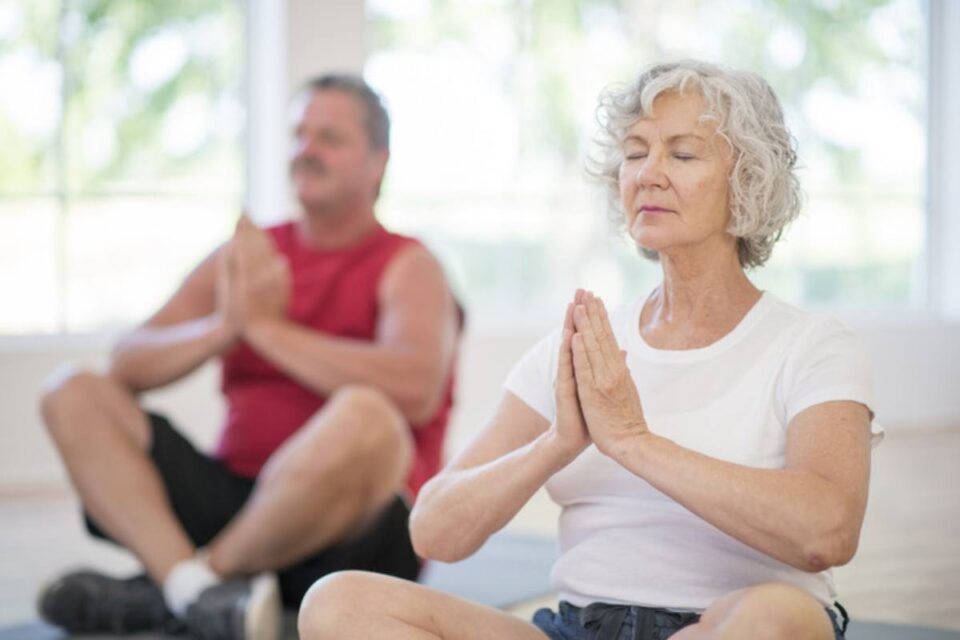Holistic healing encompasses the entire body, including the physical, mental, and spiritual aspects. It’s an approach that addresses all components of an individual’s life. A headache may be a physical sign, but what is the root cause of the headache? Maybe a chaotic work day is to blame, or perhaps you simply didn’t drink enough water or fuel yourself well during the day. A sleepless night due to stress can cause ripple effects on the body as well, including head pain and general fatigue.
Holistic healing practitioners believe that all symptoms are interconnected and influence one another. That’s why combining fitness, mindfulness, and therapy is often suggested for lasting wellness.
Why Fitness is Integrated into Holistic Healing
Fitness is much more than walking around with a six-pack of abs or being able to do 10 pushups in a row. In fact, someone who is fit may not be able to see muscle definition in their abs and may struggle to do unassisted pushups. Fitness involves connecting the body with the mind, fostering communication between the nervous system and muscles, and releasing endorphins through movement.
During physical exercise, the brain is stimulated. That’s why the term “runner’s high” is so often associated with feelings of accomplishment and euphoria. It often occurs after an intense exercise routine, such as a long run, a difficult strength session, or an endurance workout class. The brain releases chemicals like serotonin and endorphins, which are known to be instant mood boosters. At the same time, movement can also release any tension or stress from the body.
Fitness is a critical component of holistic healing because of its effects on the physical, mental, emotional, social, and even spiritual parts of the body. Having good physical health can enhance mental health, and vice versa. Now, this doesn’t necessarily mean that you need to be an all-star athlete to have great mental health. If you’re new to exercising, start slowly. Consistency will have a greater impact than grinding hard at the gym for two hours once a month.
Think about what types of movements you enjoy, or which ones intrigue you the most. Yoga, Pilates, strength training, cycling, and even walking all count toward your movement goal. Sign up for a class and ask a friend or family member to join you to help stay accountable.
The Importance of Mindfulness for Holistic Health
Take a deep breath. A really deep breath. Notice your chest rise and fall, your belly go in and out. How did that feel? For many people, a few deep, intentional breaths are all that’s needed for a mindfulness practice.
The word mindfulness oftentimes brings up meditation, and the idea of sitting in stillness for several minutes can seem like a chore for some individuals. While a racing mind and an inability to focus are part of the meditation practice, mindfulness is much more than sitting on a pillow for 30 minutes. It’s a learned practice that takes time to master and is used as a tool in different rehab centers, such as the Pathways Treatment Center in Utah.
Mindfulness focuses on the present moment. It’s the intentional awareness of being fully here with as few distractions as possible. It’s a central component of holistic health because it considers the body’s stress. In today’s world, stress is a daily part of most people’s lives. Running late to work, forgetting to pack your child’s lunch, and a never-ending to-do list can quickly make anyone’s heart pound faster.
With a solid mindfulness practice, you can feel more centered and calm without getting into too much of a frenzied state. You’ll be able to regulate your emotions, responding with ease rather than rushing and causing chaos. Most importantly, you’ll have an increased sense of self-awareness and resilience to the daily challenges you may face.
And unlike traditional thought, you can practice mindfulness just about anywhere. Turn off the music in your car on your way to pick up your kids from school, and take a few deep, slow breaths. On your daily morning walk, turn on a guided session instead of a podcast and look around at the world around you. Write in your journal how you’re feeling before going to bed, releasing any thoughts from the day, and focusing on what you can be grateful for. These habits add up and can lead to feeling stronger and more fully present.
How Therapy Can Be Part of a Holistic Healing Journey
Lastly, therapy is a significant component of holistic healing and helps provide the framework for living a well-intended, fulfilling life. As holistic healing emphasizes a person’s entire state of well-being, therapy can be used for various reasons. Someone struggling with mental health conditions such as depression or anxiety may seek therapy to regain control of their mental wellness. An individual navigating childhood trauma may turn to therapy to build confidence and strength.
No matter the reason, therapy can be utilized to unveil the root causes of certain physical and mental symptoms while also establishing a safe, judgment-free zone. Therapists will work with you to come up with a treatment plan for your best interests. This may look like specific types of therapy, such as cognitive behavioral therapy (CBT), in addition to lifestyle changes and practices. A therapist specialized in holistic health may suggest acupuncture, massage therapy, and dietary supplements to alleviate different symptoms in the body.
Regular therapy sessions can lead to long-lasting wellness, empowering you to figure out what’s ailing you by looking at your physical, mental, and emotional states. Through a holistic approach, you’ll feel in control of your overall wellness and equipped to handle life’s twists and turns.
Also read: The Gap Between Patients and Advanced Medical Technologies

